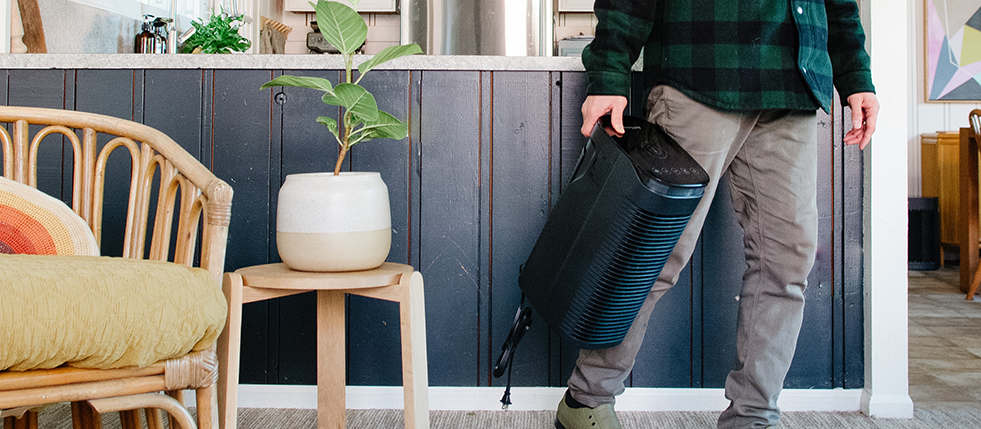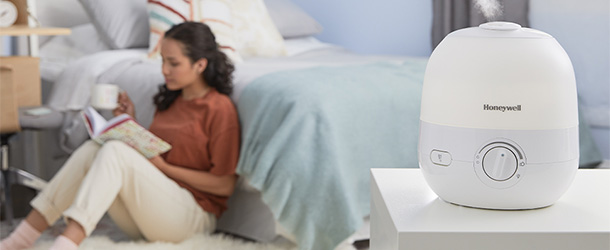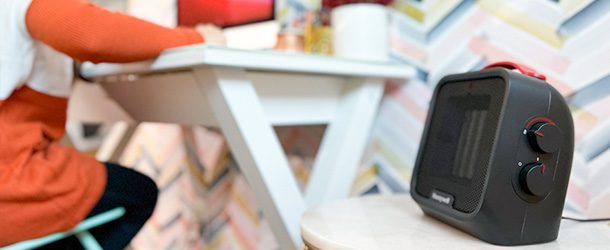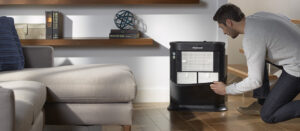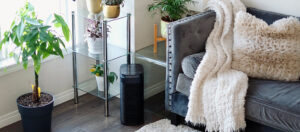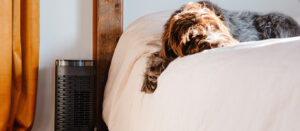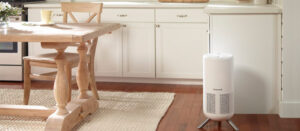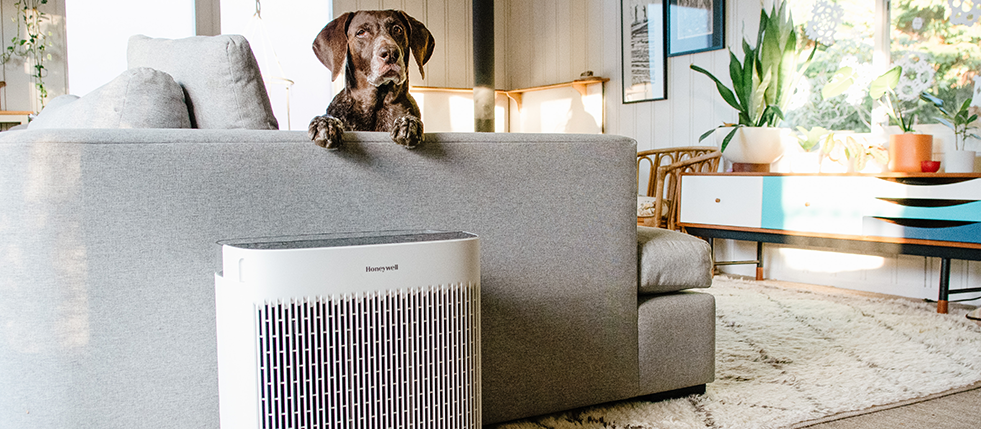You love your pet. But sometimes your pet doesn’t love you back, and they don’t even know it. Sneezing, runny nose, coughing and the itchiest eyes you’ve ever experienced. The culprit? Pet dander. That unfortunate trait our furry and feathered friends bring with them. What’s worse? Unlike other allergens, pet dander has a unique shape that makes it stick around a lot longer than you even realized.
But before you banish your favorite four-legged or winged companion to a life of living outside, or determine pets aren’t for your family, there are options to consider for minimizing the effects of pet dander. It starts with understanding your body’s reaction to dander, taking simple steps to reduce dander, and introducing simple solutions that do the work for you.
What is pet dander, and why the allergy symptoms?
Just like humans, our pets are constantly shedding dead skin cells. While this is a sign of a healthy animal, it does cause some issues for those with dander sensitivities. Your body is built to reject anything they see as a foreign substance, and for many — that means pet dander. Your body produces antibodies that attack allergens when they see them as a threat. Even when they’re not. It’s this autoimmune response that results in the symptoms we know as allergic reactions. That means, in order to decrease your symptoms — you need to decrease the thing that’s causing them.
What Actions Can I Take?
With a little effort, we can keep these allergens to a minimum by creating a cleaner environment and limiting exposure. Having a consistent routine will go a long way to control these surface-level allergens.
Consider your space and how you decorate.
Pet dander is easily trapped, so eliminating places for it to hide is the first step in designing a space that works for you and your family. Carpeting, soft surfaces, decor with extra crevices, and high-pile accent pillows are all perfect spots for pet dander. Swap out for sleeker surfaces and fewer textiles, all simpler to clean and fight against pet dander staying in place.
Designate your bedroom as pet-free.
While we love to have our animals in the bedroom, for those suffering with the most severe allergies, sleeping without your pet is an easy way to help minimize your symptoms. When your pet sleeps with you, their dander gets into the bedding, the same bedding we often pull around our faces. Or, as is the trait of many felines, they attempt to get closer to you by sleeping near your face and on your pillow. By keeping your bedroom for humans only, you increase your chances of a sneeze-free night of peaceful sleep.
Create a cleaning schedule that is easy to follow.
Minimizing dander on surfaces means establishing a routine of common household cleaning. Vacuuming, mopping, dusting and regularly doing laundry are all part of a healthy solution for reducing allergy symptoms. Creating a regular schedule helps to ensure the habit is an easy one to establish.
- DAILY: Vacuum hard surfaces using a high-efficiency particulate (HEPA) filter vacuum, and especially focus on heavy pet traffic areas where a lot of play happens. If your pet has bedding in common spaces, give it a once over with the vacuum as well. Consider the materials of your pet’s bed, and look for easy to clean options so this isn’t a chore.
- WEEKLY: Keep up with your laundry and remember any clothing items you might have been wearing while close to your pet. Regularly wash any blankets or towels used by or with your pets, and don’t overlook any soft surface toys they might regularly play with. Swap in laundry detergent that is labeled as anti-allergen. Dust hard surfaces throughout your home, using a microfiber cloth to capture the most dust particles. For heavy use areas, mop after a thorough vacuum or sweeping.
- MONTHLY: Address any out of the way spaces that aren’t regularly dusted, vacuumed, or mopped. Create a habit of working your way through your house, staying on top of dust that might collect on baseboards and other out of sight surfaces.
Regularly bathe and groom your pet.
Within the guidelines set for your pet’s breed, a regular bathing calendar helps minimize the amount of dander a pet releases by containing it to your bathtub, sink, or outside. For dogs and cats, it also helps to brush their fur either daily for longhaired breeds, or weekly for shorter hair. It’s critical to understand your breed’s needs, however, to ensure your pet’s skin remains healthy and doesn’t get overly dry – dry skin can create even more dander.
Wash your hands frequently.
As you interact with your pet, washing your hands directly after rinses off any pet dander that might cling to your hands and eventually interact with your eyes, nose and skin. This also has the added benefit of keeping other illnesses at bay.
How Can Your House Do the Work for You?
While efforts to minimize dander on surfaces is important, this still doesn’t tackle the pet dander found in the air itself. An air purifier system from Honeywell is a stress-free way to take this on. Compact, portable units are the perfect option for your home.
How do Honeywell Air Purifiers dependably tackle pet dander?
Setting up an air purifier that uses HEPA filtration helps clear the air of sensitive allergens. Founded on over 25 years of excellence, Honeywell Air Purifiers like those in the Allergen Plus, InSight®, PowerPlus and Designer Series help capture up to 99.97% of microscopic airborne allergens and particles 0.3 microns or larger. At 4.8 room air changes per hour, as independently tested and AHAM Verifide for Clean Air Delivery Rate, you can be confident that your air is effectively circulating and decreasing symptom-causing pet dander particles.
The Honeywell Designer Series HEPA Tower is a powerful indoor air purifier with a filter that gets it all done at a sound level just above a whisper, due to the UltraQuiet Technology with Sleep Mode that allows running at only 32dB. This makes it a great air purifier for pet allergies. And as an added bonus, you’ll notice a reduction in odors for a fresher smelling home overall.
Change your filters.
It’s always important to follow a calendar and change your filters in your HVAC system and your air purifier, as based on the recommendations for your model. Use Honeywell Air purifiers with optional enhanced odor filters, like the Pet Odor Filter. These specially formulated filters have activated carbon and zeolite to help capture and absorb odors unique to pets. So even when you can’t get to your regular cleaning schedule, your HVAC and purifying systems can give you peace of mind that your home will still be a place of comfort for you and your pets.
Explore Honeywell Air Purifies
References:
https://www.mayoclinic.org/diseases-conditions/pet-allergy/symptoms-causes/syc-20352192





